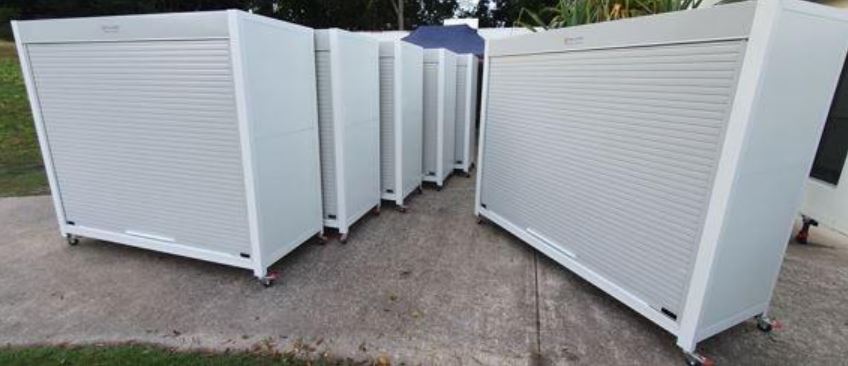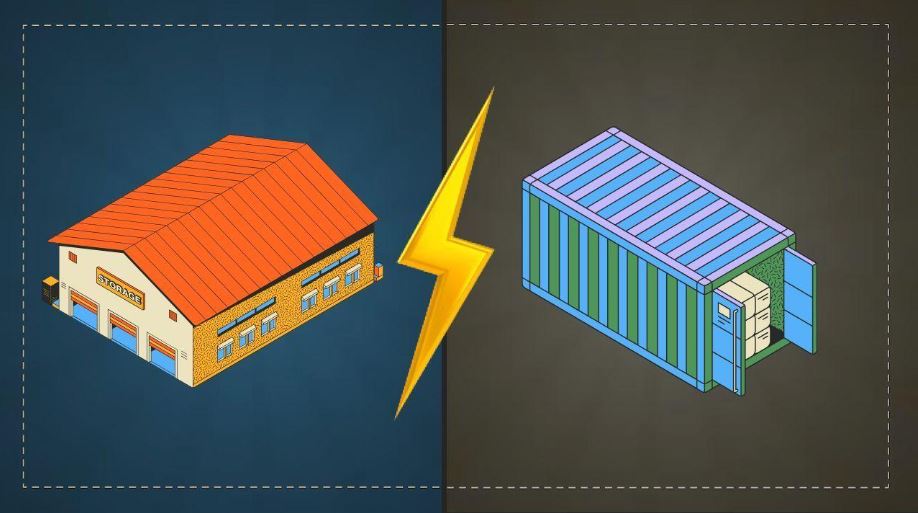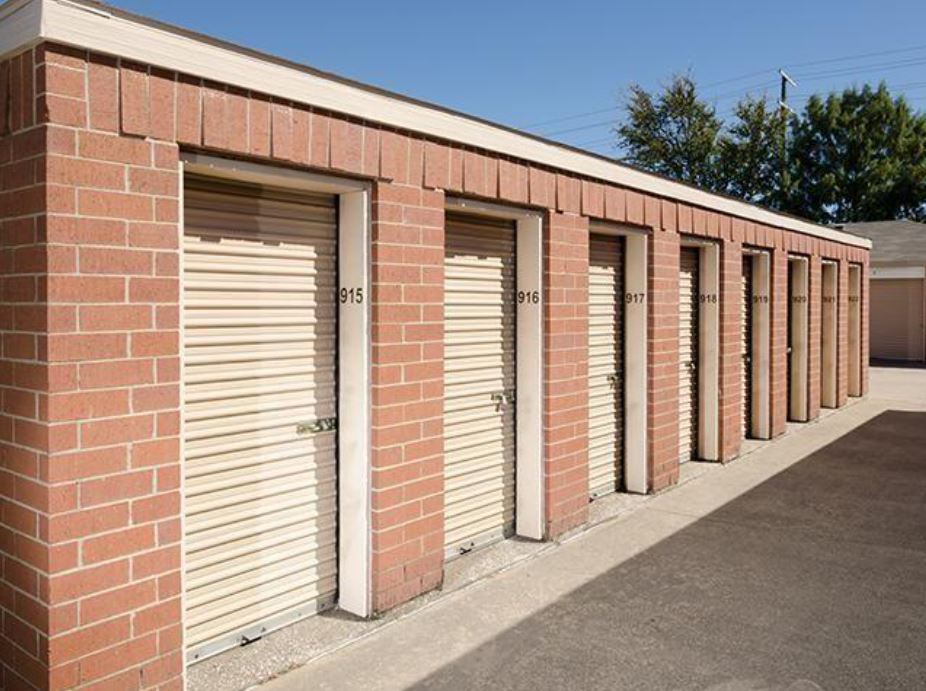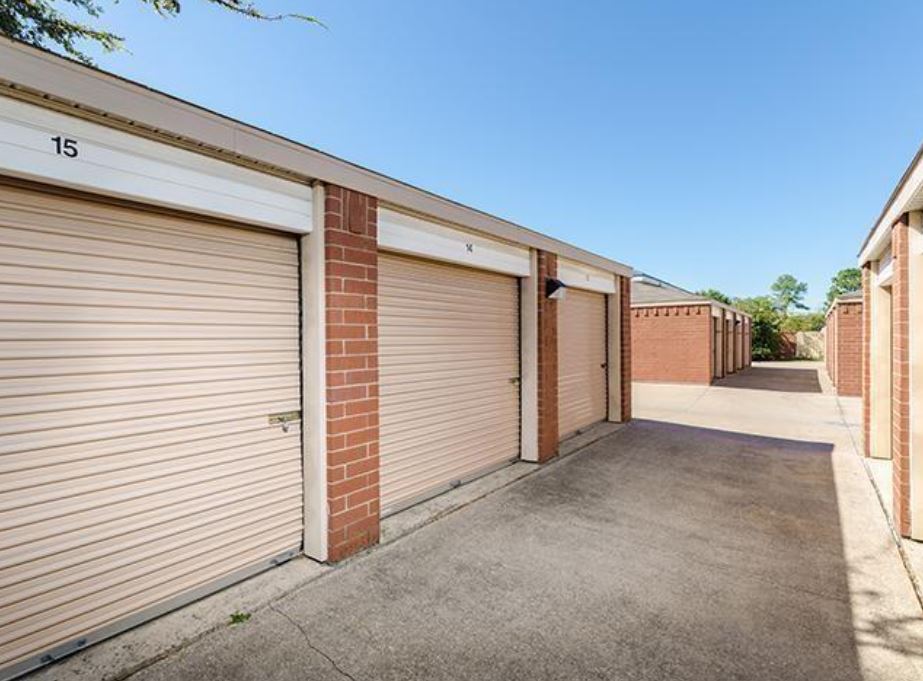Discover which self storage and portable storage pods offers better cost, security, and convenience for your home or business needs.
As life and business become more fast-paced, the demand for additional space keeps growing. Families often find themselves overwhelmed with seasonal items, furniture, or belongings that no longer fit at home, while businesses struggle with expanding inventory, equipment, or files that crowd valuable workspace. In both cases, having a practical storage solution is essential to staying organized and efficient. This is where modern storage options, like self storage facilities and portable storage pods, come into play, offering flexibility and peace of mind for anyone needing more room.
When it comes to finding more and more space for your need, two main solutions dominate the market: self storage units and portable storage pods. Self storage is the traditional option, offering secure units at a facility where you can store personal or business items of all sizes.
Portable storage pods, on the other hand, bring the unit to your doorstep, making them a convenient choice for moving or temporary projects. While both options provide valuable space, they differ greatly in cost, accessibility, and flexibility, making it important to understand their strengths before choosing the right fit.
Article Breakdown
What Is Self Storage
Definition
Self storage, often called “self-service storage,” is a service that allows individuals and businesses to rent secure spaces, commonly known as storage units, on a short-term or long-term basis. These units vary in size, from small lockers to large garage-style spaces, and are designed to store personal belongings, seasonal items, household furniture, business inventory, or documents. Unlike warehouses, tenants maintain full control of their unit, typically
securing it with their own lock and key, which makes self storage a flexible and private extension of their home or office.
How It Works
The process of using self storage is simple and user-friendly. Customers choose a facility, select a unit size based on their needs, and sign a rental agreement, most often month-to-month.
Once rented, the unit is exclusively theirs to access, usually during the facility’s operating hours or, in many modern facilities, 24/7 with gated entry codes. Many facilities also offer added features like climate-controlled units to protect sensitive items, surveillance cameras, individual alarms, and on-site staff for extra security. Some even provide moving supplies or truck rentals to make the transition smoother.
Typical Use Cases
People turn to self storage for a wide variety of reasons, but some of the most common include:
- Moving and Relocation: Temporary storage for furniture and boxes when transitioning between homes.
- Home Renovations: Keeping belongings safe while a house is under construction or remodeling.
- Decluttering and Downsizing: Freeing up space at home without parting with sentimental or seasonal items.
- Seasonal Storage: Storing items like holiday decorations, sporting gear, or patio furniture when not in use.
- Business Needs: A cost-effective solution for excess inventory, archived files, promotional materials, or equipment without leasing expensive commercial space.
- Life Events: Major transitions such as marriage, divorce, retirement, or the passing of a loved one often create the need for temporary storage.
In short, self storage provides a practical, flexible, and secure way to manage life’s overflow, whether it’s for a few weeks or several years.
What Are Portable Storage Pods?

Definition
Portable storage pods are mobile storage containers designed to make moving and storing belongings more convenient. Unlike traditional self-storage, where you transport items to a facility, pods are delivered directly to your home or business. Once dropped off, you can load them at your own pace, lock them securely, and either keep them on-site or have them transported to a secure storage facility or new location. Built with durable, weather-resistant materials, pods are designed to protect your belongings while offering unmatched flexibility.
How They Work
The process is straightforward and customer-focused:
- Delivery: A provider delivers the pod to your driveway, curbside, or business premises.
- Loading: You load your belongings at ground level, eliminating the need for ramps or steep truck beds. This can be done on your schedule, giving you flexibility during stressful moves or projects.
- Storage or Moving: Once packed, the pod can remain on-site for easy access, be picked up for temporary storage at the provider’s secure facility, or be delivered to your new destination, whether across town or across the country.
- Pickup: When you’re finished, the provider returns to collect the empty container.
This door-to-door model eliminates the hassle of renting moving trucks and reduces the number of times belongings need to be handled, which minimizes the risk of damage.
Typical Use Cases
Portable storage pods have become popular for both personal and business use because of their flexibility. Common scenarios include:
- Residential Moving: Pods simplify relocation by allowing you to pack at your own pace, then transport your items safely to your new home.
- Home Renovations: Keep furniture, appliances, or personal belongings safe and out of the way during remodeling projects.
- Seasonal Storage: Store holiday decorations, patio furniture, or sporting equipment when not in use without crowding your home.
- Business Storage: Companies use pods to hold extra inventory, office furniture, or equipment during expansions, relocations, or peak sales seasons.
- Emergency Solutions: After natural disasters or unexpected life events, pods provide quick, reliable temporary storage.
- Decluttering and Downsizing: Ideal for staging homes for sale or creating more space while deciding what to keep long-term.
In short, portable storage pods offer a modern, versatile alternative to traditional storage, perfect for people who want security, convenience, and control over their schedule.
Key Differences Between Self Storage and Portable Storage Pods

Cost
When comparing costs, self storage generally offers a lower baseline rate per square foot, especially for long-term rentals. You only pay for the space you actually use. Portable storage pods, by contrast, often come with additional fees: delivery to your site, pickup or transport to a storage facility, and sometimes repositioning costs. For example, many pod providers charge a separate fee for delivery and pickup, which can substantially increase the total monthly expense. Because of these added logistics, pods are typically more expensive overall, particularly for long-term storage or frequent moves. However, if time, labor, or convenience are priorities, those increased costs may be justifiable.
Accessibility
Self-storage units are located at a fixed facility, so you’ll need to transport your belongings there and follow the facility’s operating hours. Many modern facilities, however, offer extended access or even 24/7 entry, making it easier to store and retrieve your items whenever you need.
Checking out a nearby self storage facility will give you a clear idea of how convenient and secure self-storage can be. Portable storage pods flip that model: the container is delivered to your site, allowing you to load or unload at your own pace. Once packed, the pod can stay onsite (if local rules allow) or be stored elsewhere, but during that offsite phase, accessing contents typically requires scheduling.
This means self storage may give quicker, more direct access (if the facility is nearby and open), whereas pods offer on-site convenience during the initial phase, but access may be limited once offsite.
Security
Self storage facilities often provide multi-layered security: gated entry, surveillance cameras, security personnel, unit alarms, and strict access controls. The facility itself maintains responsibility for perimeter and building security.
With portable pods, your security depends more on the container’s build quality (steel frames, tamper-resistant locks) and where the pod is stored. If the pod remains on your property, it’s your responsibility to place it in a safe, visible location. Once the provider stores it in a warehouse, that facility’s security level determines protection. Many pod companies also use weather-resistant materials and reinforced locking systems to reduce risk.
Flexibility
One of the biggest advantages of pods is flexibility. Since the unit comes to you, you can load gradually over days, weeks, or even months without needing to make repeated trips. Pods allow you to move the container when you move, so your storage “moves” with you without unloading and reloading.
Self storage is less flexible in that sense: you must transport everything to the facility, and changing units (up or down in size) often means coordinating moves. However, many self storage providers allow swapping units or upgrading/downgrading when needed.
Space and Unit Sizes
Self storage facilities generally offer a large selection of unit sizes, small lockers, medium
walk-in spaces, up to garage-sized or even warehouse-scale. This lets you pay precisely for the right space.
Pods tend to come in a few standardized container sizes (for example, 8-ft, 12-ft, 16-ft), limiting flexibility. If you don’t fill a container, you still pay for the full unit. In addition, pods may have constraints on how densely you can stack or load items due to weight distribution and transport safety.
Weather Protection
Self storage facilities often offer indoor units, climate-controlled options, and better insulation against temperature swings, humidity, pests, or flooding. That gives strong protection for sensitive items (wood, electronics, documents).
Pods are built to withstand outdoor conditions, steel construction, weather-resistant seals, and durable materials, but long-term exposure to intense heat, humidity, or moisture may still pose risks. If a pod is stored in a controlled warehouse after pickup, that helps mitigate those risks.

Pros and Cons of Self Storage & Portable Storage
Self Storage Units:
Pros:
- Variety of Sizes: Offers a range of unit sizes to accommodate different storage needs.
- Climate Control Options: Ideal for sensitive items requiring temperature and humidity control.
- Enhanced Security: Often features surveillance cameras, gated access, and on-site staff.
- Consistent Access Hours: Regular hours for access; some facilities offer 24/7 access.
Cons:
- Limited Access: Access restricted to facility hours; may require travel to the location.
- Additional Costs: Potential extra fees for climate control, insurance, and administrative charges.
- Multiple Handling: Items may need to be loaded, transported, and unloaded multiple times.
Portable Storage Pods:
Pros:
- Convenient Delivery: Delivered directly to your location; no need to transport items to a facility.
- Flexible Access: Access your items at your convenience, especially if kept on-site.
- Single Handling: Load and unload items once; reduces the risk of damage.
- Versatile Use: Suitable for moving, renovations, or temporary storage needs.
Cons:
- Size Limitations: Limited to available container sizes; may not accommodate all items.
- Weather Exposure: While weather-resistant, may not offer protection against extreme temperatures.
- Higher Costs: Generally more expensive; additional fees for delivery, pickup, and storage duration.
- Regulatory Restrictions: Some areas may have zoning laws or HOA rules restricting placement.
In summary, the choice between Self Storage Units and Portable Storage Pods depends on your specific needs, budget, and preferences. Self Storage Units offer a variety of sizes and enhanced security, making them suitable for long-term storage of sensitive items. Portable Storage Pods provide flexibility and convenience, ideal for short-term storage, moving, or renovation projects. Consider your requirements carefully to select the option that best fits your situation.
Which Option Is Right for You?

If you’re weighing self storage against portable pods, the decision usually comes down to three things: how often you need access, how long you’ll store, and how much convenience you want to pay for. Below are plain-language scenarios to help you decide; plus a quick, real-world-style nod toward U-Stor if self storage sounds like your match.
When to choose self storage
Pick a self storage unit when you want something steady, secure, and economical for longer-term needs.
- You’ll need access regularly. If you’re grabbing tools, inventory, or files often, a nearby storage facility keeps those trips short and simple.
- It’s a long-term solution. For seasonal inventory, archived records, or holding furniture during a long move, self storage tends to be cheaper month-to-month.
- You have sensitive items. If antiques, electronics, or paperwork need stable temperatures, look for climate-controlled units.
- You want built-in security. Facilities typically offer gated access, cameras, and staff on-site; good peace of mind.
Quick suggestion: If self storage sounds right, consider U-Stor. Customers like U-Stor for straightforward online booking, a wide range of unit sizes, solid security (gated entry + cameras), and flexible month-to-month terms; everything you’d want when storing for more than a few weeks.
When to choose portable storage pods
Choose pods when convenience and one-time moves matter more than long-term cost.
- You’re moving or staging a house. Pods let you pack at your own pace and then have the container moved for you.
- You need on-site storage during projects. Renovations or short-term on-site storage for supplies are perfect pod use-cases.
- You want fewer trips and less heavy lifting. Pods remove the need to rent and drive a moving truck.
- You’re after short-term flexibility. If you only need storage for a few weeks or months and want everything handled, pods win.
Heads-up: pods can be pricier once delivery/pickup fees are added, and access can be limited if the container is stored off-site.
Both self storage and portable storage pods solve the same problem: you need more room. The best choice depends on how long you’ll store, how often you’ll need access, and how much convenience you’re willing to pay for. If you want short-term, doorstep convenience during a move or renovation, a portable pod is a smart pick. If you need reliable security, predictable access, climate protection, and better value for longer stays, self storage is usually the wiser option.
From real-world experience helping customers weigh their options, I often recommend self storage for people and businesses who want stability and peace of mind. U-Stor Self storage is a practical choice in that category; clean facilities, clear pricing, a good range of unit sizes, and solid security features that make storing less stressful.



